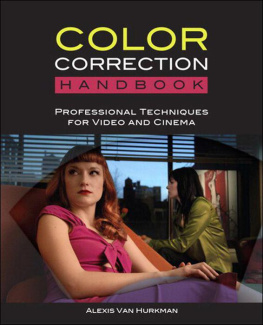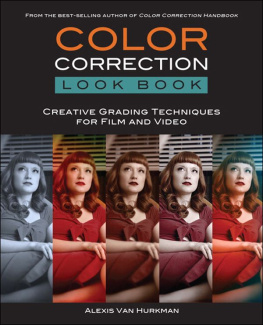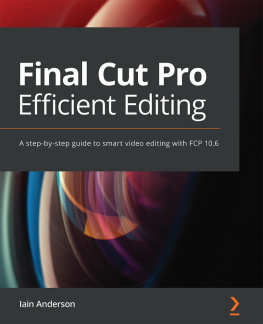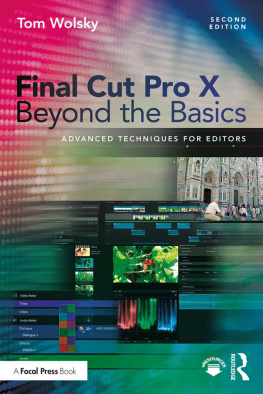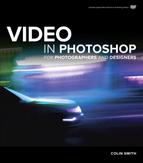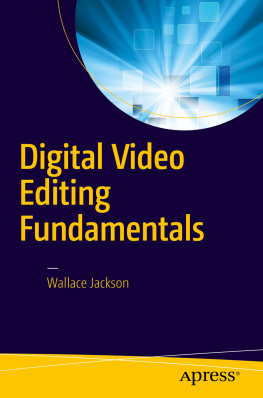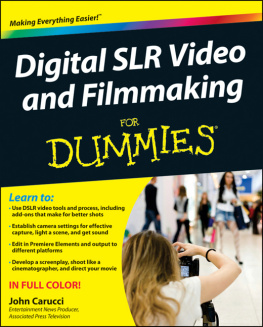Alexis Van Hurkman - Color Correction Handbook: Professional Techniques for Video and Cinema
Here you can read online Alexis Van Hurkman - Color Correction Handbook: Professional Techniques for Video and Cinema full text of the book (entire story) in english for free. Download pdf and epub, get meaning, cover and reviews about this ebook. year: 2010, publisher: Peachpit Press, genre: Home and family. Description of the work, (preface) as well as reviews are available. Best literature library LitArk.com created for fans of good reading and offers a wide selection of genres:
Romance novel
Science fiction
Adventure
Detective
Science
History
Home and family
Prose
Art
Politics
Computer
Non-fiction
Religion
Business
Children
Humor
Choose a favorite category and find really read worthwhile books. Enjoy immersion in the world of imagination, feel the emotions of the characters or learn something new for yourself, make an fascinating discovery.
- Book:Color Correction Handbook: Professional Techniques for Video and Cinema
- Author:
- Publisher:Peachpit Press
- Genre:
- Year:2010
- Rating:4 / 5
- Favourites:Add to favourites
- Your mark:
Color Correction Handbook: Professional Techniques for Video and Cinema: summary, description and annotation
We offer to read an annotation, description, summary or preface (depends on what the author of the book "Color Correction Handbook: Professional Techniques for Video and Cinema" wrote himself). If you haven't found the necessary information about the book — write in the comments, we will try to find it.
After reading the techniques, readers will learn to apply the methods that all of the color correction applications use, how to problem-solve and trouble-shoot, how to maximize the effectiveness of each tool thats available, and they will discover how to creatively combine techniques and tools to accomplish the types of stylizations that colorists are often called upon to create.
Praise for Color Correction Handbook:
From Alexis Van Hurkman comes an up-to-date, most welcome, encyclopedic guide for colorists: Color CorrectionHandbook (Professional Techniques for Video and Cinema). The breadth of this work is almost impossibly ambitious: Van Hurkman embraces all the important topics, and the liberal use of illustrated examples, with accompanying waveforms and solutions from various platforms, succeeds in providing a single reference work for the colorist at almost any level of expertise.... Colorists will find gaps in their knowledge are as well-served by this book as the aspiring colorist already under the tutelage of a master.
Ron Lingelbach
Colorist, Dolby Laboratories; Founder, TKcolorist Internet Group (TIG)
Color correction is a complex and subtle craft. The student needs to sit next to professionals on a real jobs, and ask them continuously what they just did, and why they did it. The professional rarely has the time and the patience to answer newbie questions, and the earnest scholar quickly ends up outside the grading suite, wondering sadly whether there was an easier road to knowledge.
Now, at last, there may be. Alex Van Hurkmans book comes with a DVD of example material you can load onto your color grading workstation. It covers many useful real examples, explaining what you might do to make the images look better, what is the easiest way to do it on any of the popular platforms, and even how to explain what you are doing to others. If you want to learn color correction, this book will make a difference.
Dr Richard Kirk
Colour Scientist, FilmLight Ltd
Recipient of 2010 AMPAS Scientific and Engineering Award
Van Hurkman covers the theory and the practical application of color-correction very well...its always good to understand the theory of *why* the image looks good or bad and how it relates to photography, electronics, and physics.
I have no doubt Van Hurkmans book is as close as were going to get to a standard textbook for the world of color correction. If nothing else, I think it communicates the idea to neophyte filmmakers that theres far more to color-correction than just having the software or the box. Its *experience* that makes good color -- not the system.
Highly recommended.
--Marc Wielage/Senior Colorist
Lowry Digital/Burbank
Alexis Van Hurkman: author's other books
Who wrote Color Correction Handbook: Professional Techniques for Video and Cinema? Find out the surname, the name of the author of the book and a list of all author's works by series.

